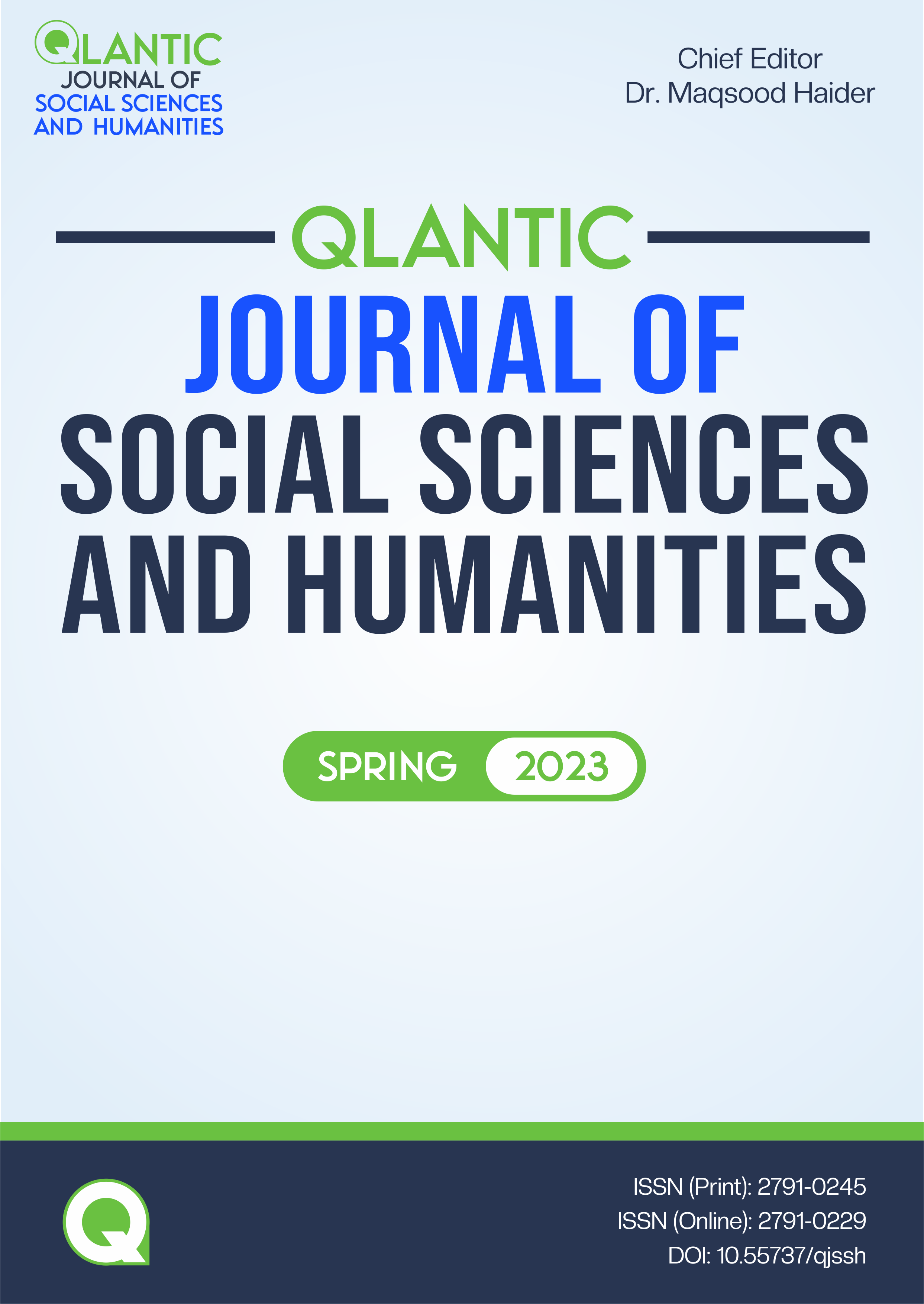The Role of Healthcare Information Technology (HIT) in Health Care Level of Pakistan: A Literature Review
DOI:
https://doi.org/10.55737/qjssh.775491425Keywords:
Healthcare Actors, Healthcare Information Technology (HIT), Health Care Levels, Burden of DiseasesAbstract
This paper illustrates the debate and initiatives concerning the role of Healthcare Information Technology (HIT) at the Healthcare level in Pakistan. This paper reviewed the recent literature on Healthcare Information technology (HIT) to explore the role of the healthcare actors' level and healthcare delivery level. The purpose of this study is to look at the expanding role in the form of the reduced burden of diseases by the improvement of efficiency and quality of healthcare such as saving the time of patients and doctors and more affordable healthcare to overall and reduced healthcare costs, and this is all by Health Information Management System (HIMS), Telemedicine and Mobile and electronic Health in the context of Pakistan; this search identified 1025 results, 85 of which were considered on the base of abstract and conclusion but most specified article related to the objective of this paper are 45 articles in which five on the efficiency of healthcare, three on the equitable healthcare, six on the lower healthcare costs, 15 on reducing the burden of diseases, and nine on the components of Healthcare IT. The main challenges of adopting Healthcare IT and suggestions are discussed.
References
Din, I. U., Xue, M. C., Abdullah, Ali, S., Shah, T., & Ilyas, A. (2017). Role of information & communication technology (ICT) and e-governance in health sector of Pakistan: A case study of Peshawar. Cogent Social Sciences, 3(1), 1308051. https://doi.org/10.1080/23311886.2017.1308051
Dzenowagis, J. (2018). Digital technologies: shaping the future of primary health care. World Health Organization.
Hendricks, D. (2017, May 18). 3D printing is already changing health care. Harvard Business Review. https://hbr.org/2016/03/3d-printing-is-already-changing-health-care
Khan, S. A. (2019). Situation Analysis of Health Care System of Pakistan: Post 18 Amendments. Health Care: Current Reviews, 07(03). https://doi.org/10.35248/2375-4273.19.07.244
Kumar, S., & Bano, S. (2017). Comparison and Analysis of Health Care Delivery Systems: Pakistan versus Bangladesh. Journal of Hospital & Medical Management, 03(01). https://doi.org/10.4172/2471-9781.100020
Lee, J., Kim, K., Shin, H., & Hwang, J. (2018). Acceptance Factors of Appropriate Technology: Case of Water Purification Systems in Binh Dinh, Vietnam. Sustainability, 10(7), 2255. https://doi.org/10.3390/su10072255
Nishtar, S. (2006). Health Indicators of Pakistan Gateway Paper II. Pakistan’s Health Policy Forum and Heartfile; Islamabad, Pakistan. http://www.heartfile.org/pdf/GWP-II.pdf
Nizar, H., & Chagani, P. (2016). Analysis of Health Care Delivery System in Pakistan and Singapore. International Journal of Nursing Education, 8(2), 21. https://doi.org/10.5958/0974-9357.2016.00041.6
Punjani, N. S., Shams, S., & Bhanji, S. M. (2014). Analysis of Health Care Delivery Systems: Pakistan Versus United States. INTERNATIONAL JOURNAL of ENDORSING HEALTH SCIENCE RESEARCH (IJEHSR), 2(1), 38. https://doi.org/10.29052/ijehsr.v2.i1.2014.38-41
Ren, J., Liu, C., Gao, Q.-S., Yang, L., Huang, X., & Guo, Q. (2015). Use of appropriate healthcare technologies: a cross-sectional study in rural Zhejiang of China. BMC Health Services Research, 15(1). https://doi.org/10.1186/s12913-015-0947-4
Wasay, M., Zaidi, S., Khan, M., & Jooma, R. (2014). Non-communicable diseases in Pakistan: burden, challenges and a way forward for health care authorities. JPMA. The Journal of the Pakistan Medical Association, 64(11), 1218–1219. https://pubmed.ncbi.nlm.nih.gov/25831633/
WHO. (1998). PLACE AND DATE OF FUTURE SESSIONS OF THE REGIONAL COMMITTEE. In REGIONAL COMMITTEE FOR THE EASTERN MEDITERRANEAN. https://applications.emro.who.int/docs/em_rc45_inf_doc_2_en.pdf
WHO. (2015). Point-of-care G6PD testing to support the safe use of primaquine for the treatment of vivax malaria. World Health Organization. http://www.who.int/malaria/mpac/mpac-march2015-erg-g6pd.pdf
Young, H. M., & Nesbitt, T. S. (2017). Increasing the capacity of primary care through enabling technology. Journal of General Internal Medicine, 32(4), 398–403. https://doi.org/10.1007/s11606-016-3952-3
Published
Issue
Section
License

This work is licensed under a Creative Commons Attribution-NonCommercial 4.0 International License.





